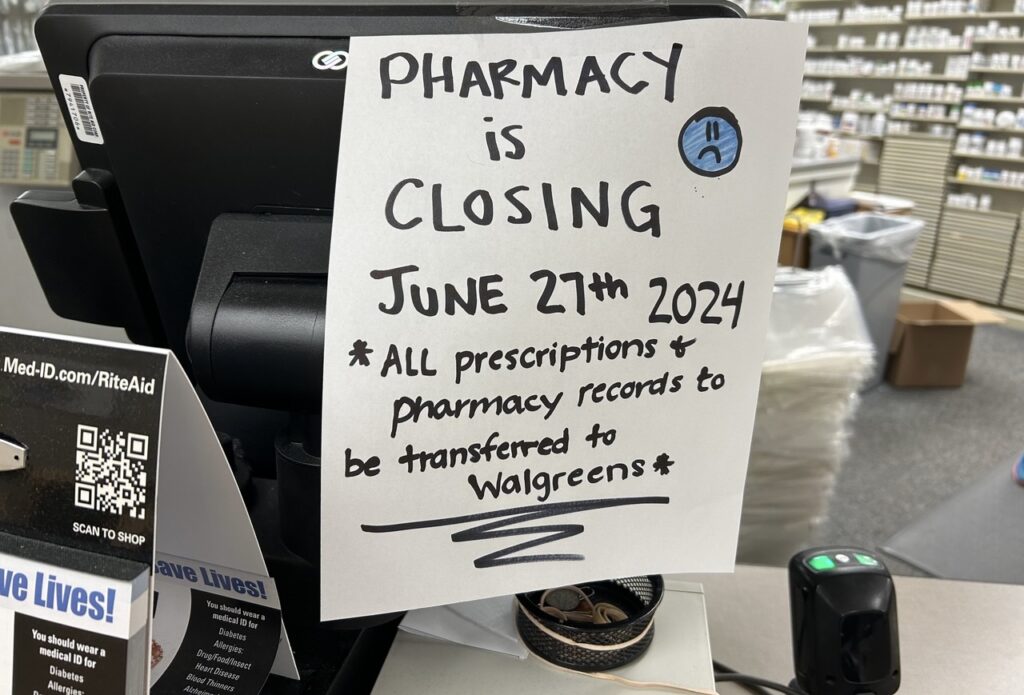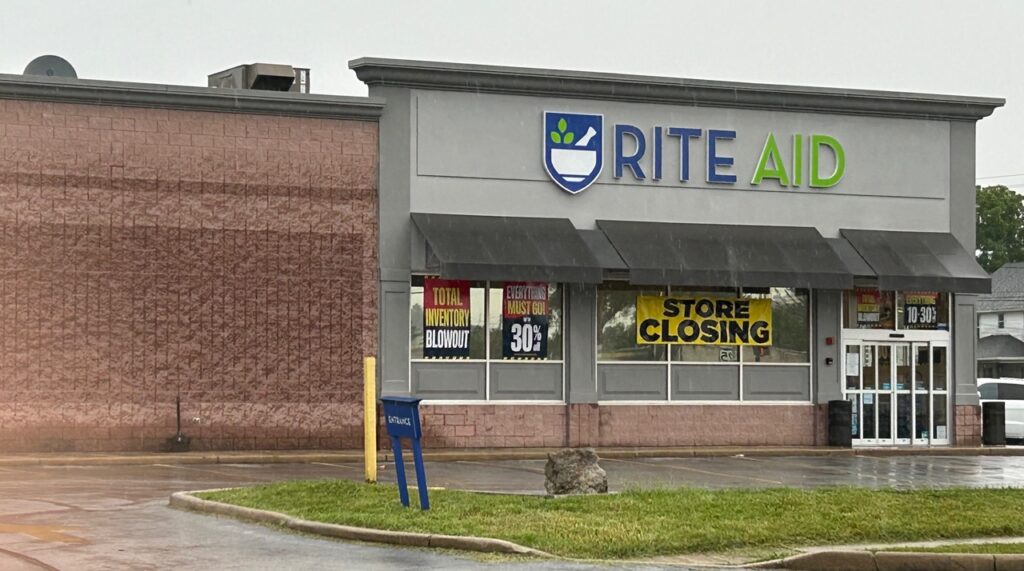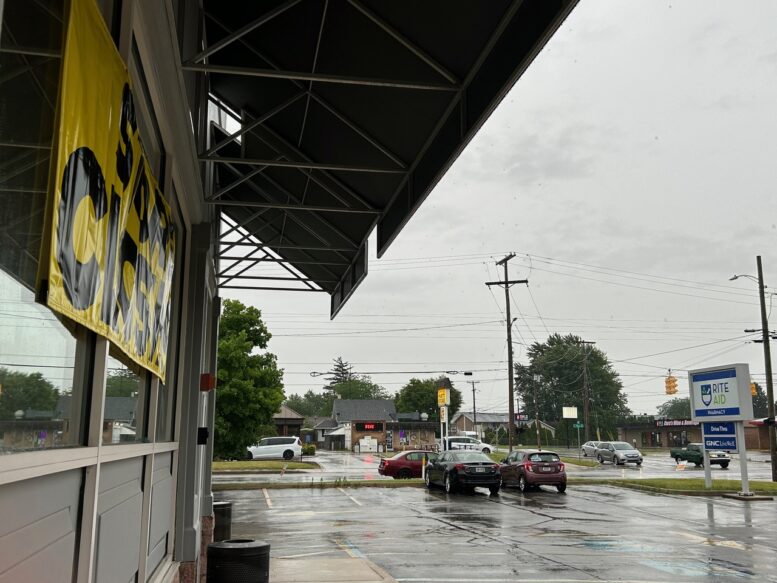By DAVID DUPONT
BG Independent News
The wine at Rite Aid in Bowling Green is moving briskly.
The shelves are getting empty thanks to an up to 40-percent discount. Those savings won’t last. The store will close on July 28 as will all but a few locations in Ohio and all stores in Michigan.
That will leave cashier Ted Truman without a job.
When the news was announced last week, he said, he was “blindsided.” Before that the impression employees got from the company was that everything would be fine despite the corporation’s filing for bankruptcy late last year.
Now alcohol, cosmetics, nuts, and vitamins are the hot sellers in the close out sale.

The store’s pharmacy, however, closes Thursday. Last week’s announcement gave the pharmacists only 10 days to wrap up business before the pharmacy closes with all prescriptions being transferred to Walgreens.
That doesn’t help Rich Shedron. A few weeks ago, he purchased a new meter to monitor his diabetes. It’s a branded product and requires Rote Aid lancets and test stripes. So Tuesday, he was in the BG store with his wife, Melinda stocking up, so he can at least get a few more months of use out of the meter.
The Shedrons live nearby. It was close enough to stop by and pick up whatever they needed.
They also got their flu shots here, Melinda Shedron said.
“It’s sad to see another store close,” said Janet Bower.
She and her husband, Dennis, had stopped by to pick some bargains.
They were surprised the store was closing given its prominent location on the northwest corner of South Main Street and Napoleon Road.

But the closure wasn’t driven by a lack of business at the local store, Truman said. It was a corporate decision.
Since the company filed for Chapter 11 bankruptcy, it has closed stores in a number of states.
Ohio Capital Journal reported that Rite Aid has about 142 pharmacies in Ohio, representing about 7 percent of the state’s 2,100 pharmacies.
Ohio Capital Journal also reported: “The news is especially concerning because many Rite Aid stores are in small communities and their closure will deprive some residents of what had been their most common point of access to a health professional.”

